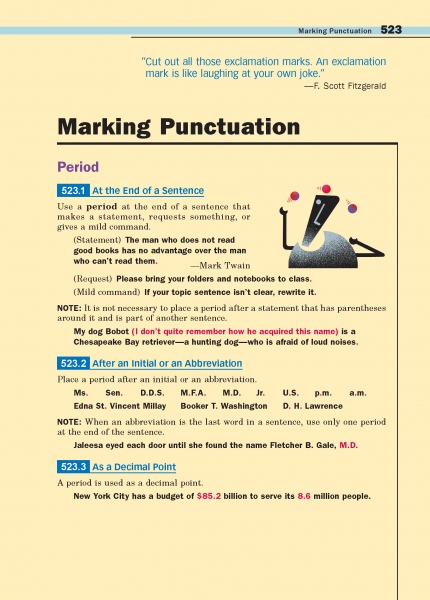Page 523 from

Start-Up Activity
Ask how many of your students have their driver's licenses already. Ask how many are working on getting them. Then tell the class you are going to give them a little driving test. You will show them a sign, and they need to rapidly tell you what to do. Show the following visuals one by one and let students respond:
Ask what happens if students are driving and they do not respond to one of these signs.
Then tell students that punctuation serves as road signs in sentences. It tells when to stop (.), pause (,), merge (;), expect a curve (?), or proceed with caution (!). It helps readers successfully navigate the ideas in a piece of writing, arriving at the destination after a safe, smooth journey.
After this warm-up, direct students to the rules for using periods.
Think About It
“The greatest sign of success for a teacher . . . is to be able to say, 'The children are now working as if I did not exist.' ”
—Maria Montessori

Start-Up Activity
Ask how many of your students have their driver's licenses already. Ask how many are working on getting them. Then tell the class you are going to give them a little driving test. You will show them a sign, and they need to rapidly tell you what to do. Show the following visuals one by one and let students respond:
Ask what happens if students are driving and they do not respond to one of these signs.
Then tell students that punctuation serves as road signs in sentences. It tells when to stop (.), pause (,), merge (;), expect a curve (?), or proceed with caution (!). It helps readers successfully navigate the ideas in a piece of writing, arriving at the destination after a safe, smooth journey.
After this warm-up, direct students to the rules for using periods.
Think About It
“The greatest sign of success for a teacher . . . is to be able to say, 'The children are now working as if I did not exist.' ”
—Maria Montessori
